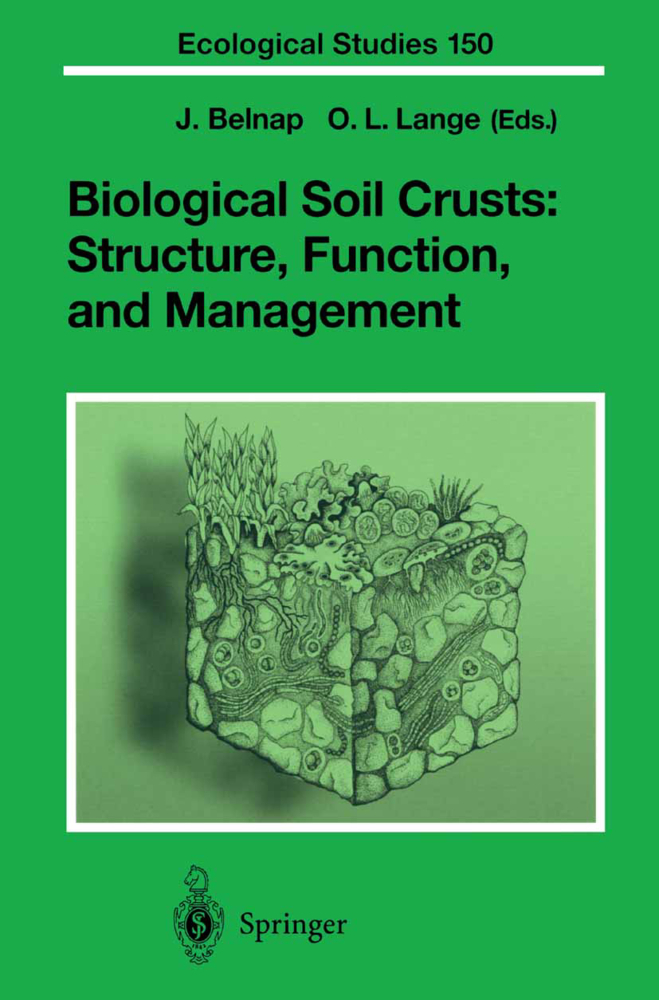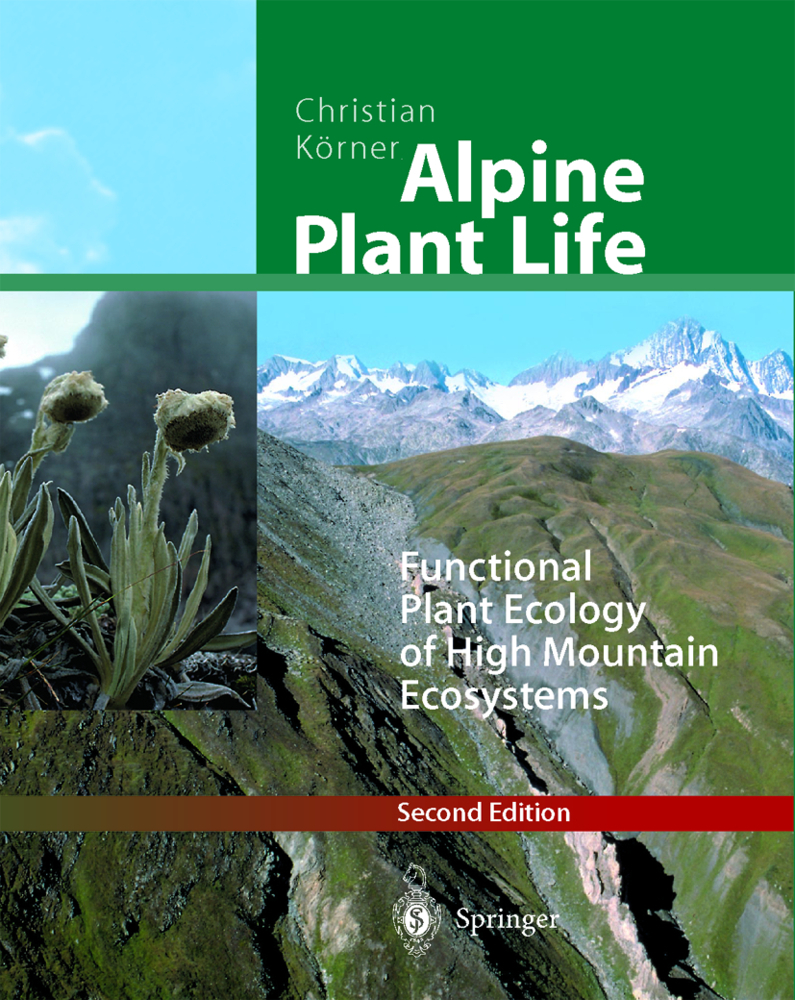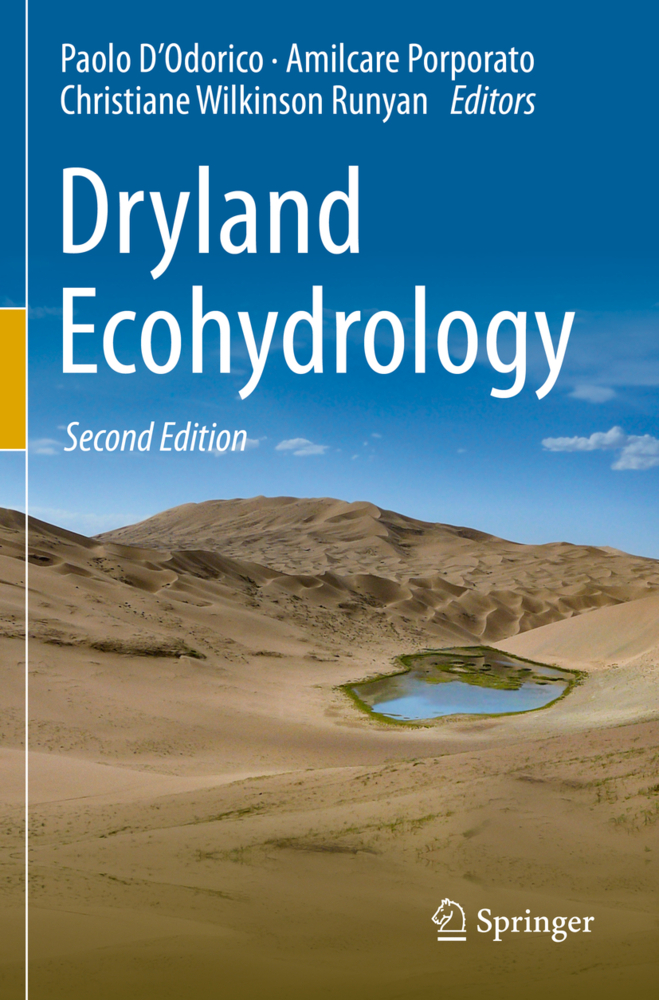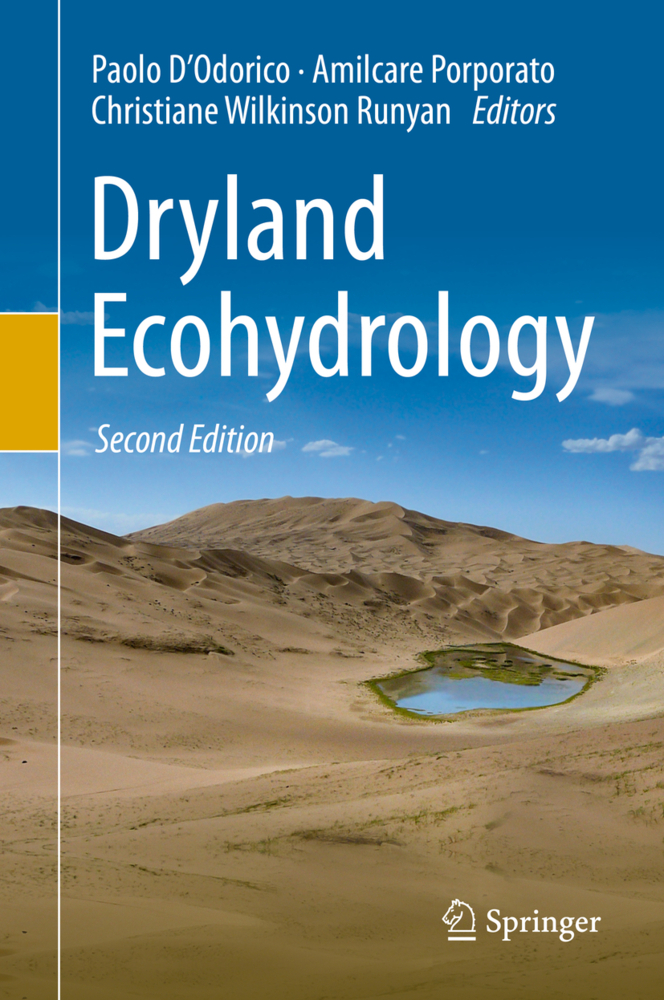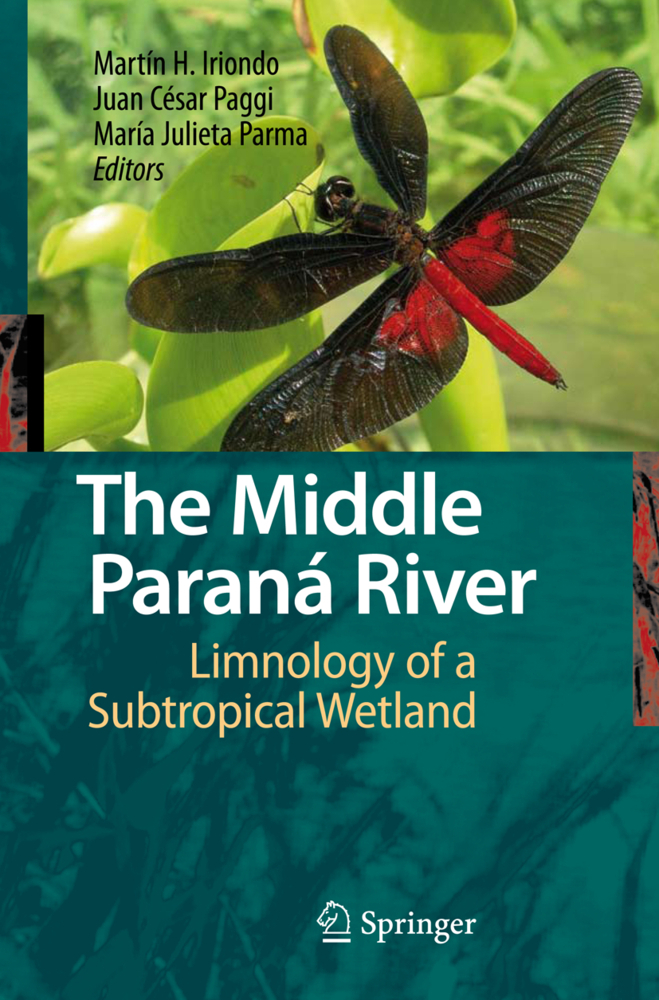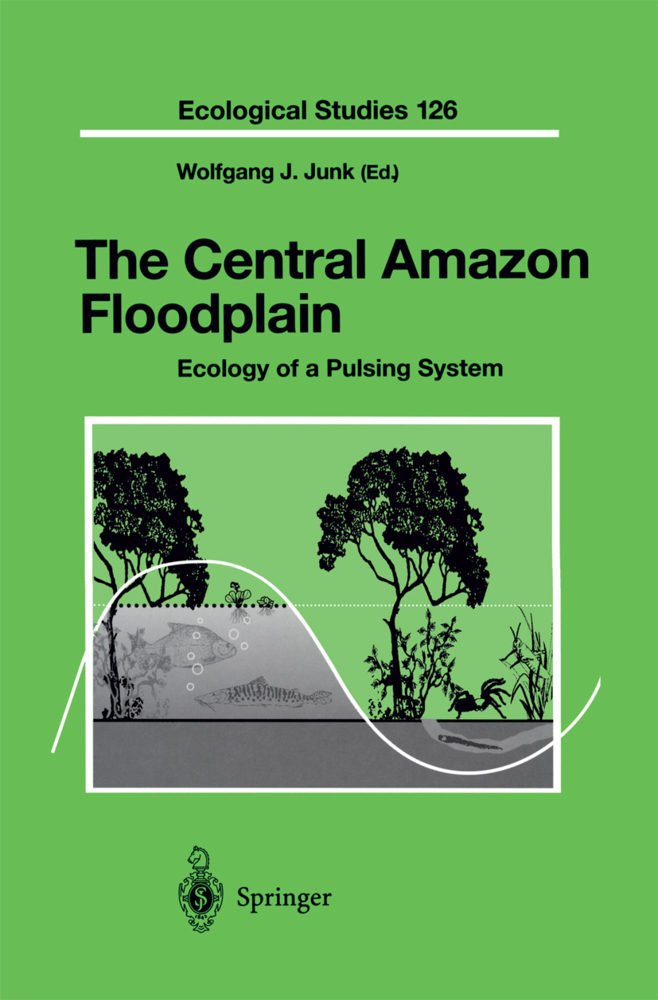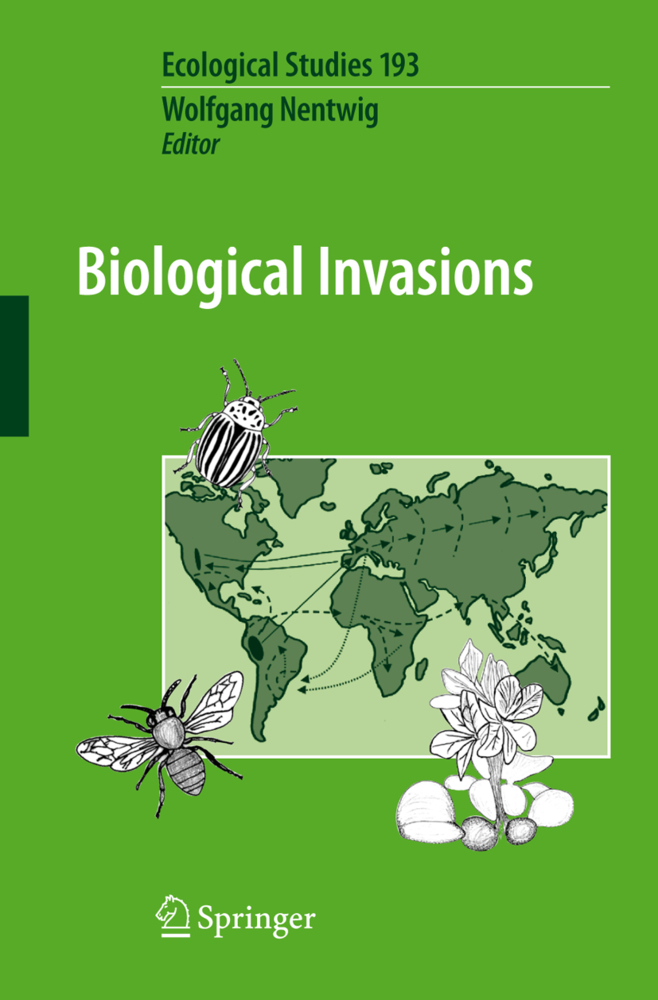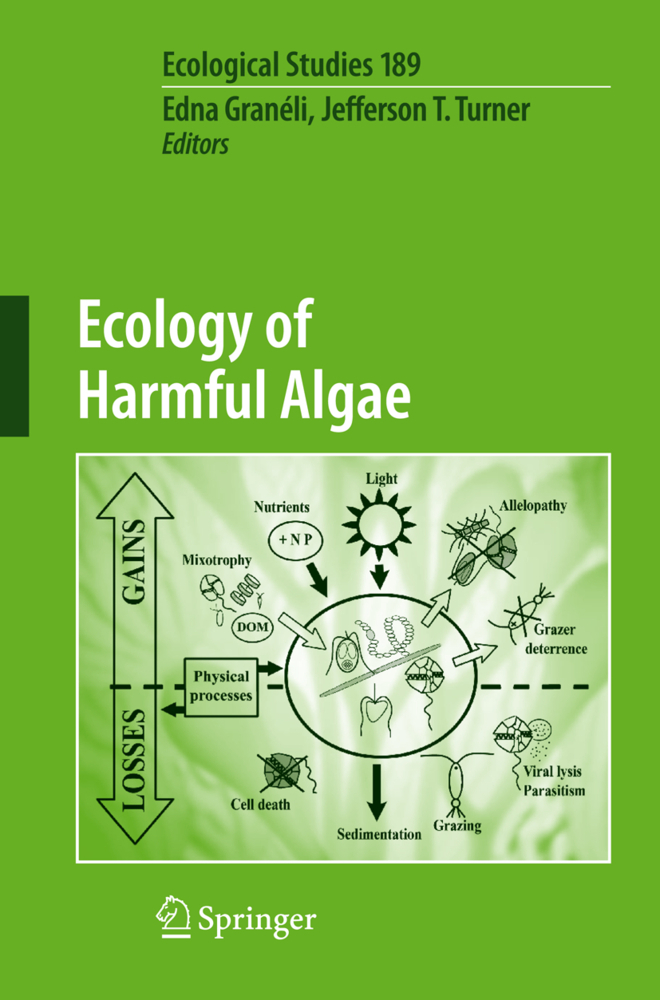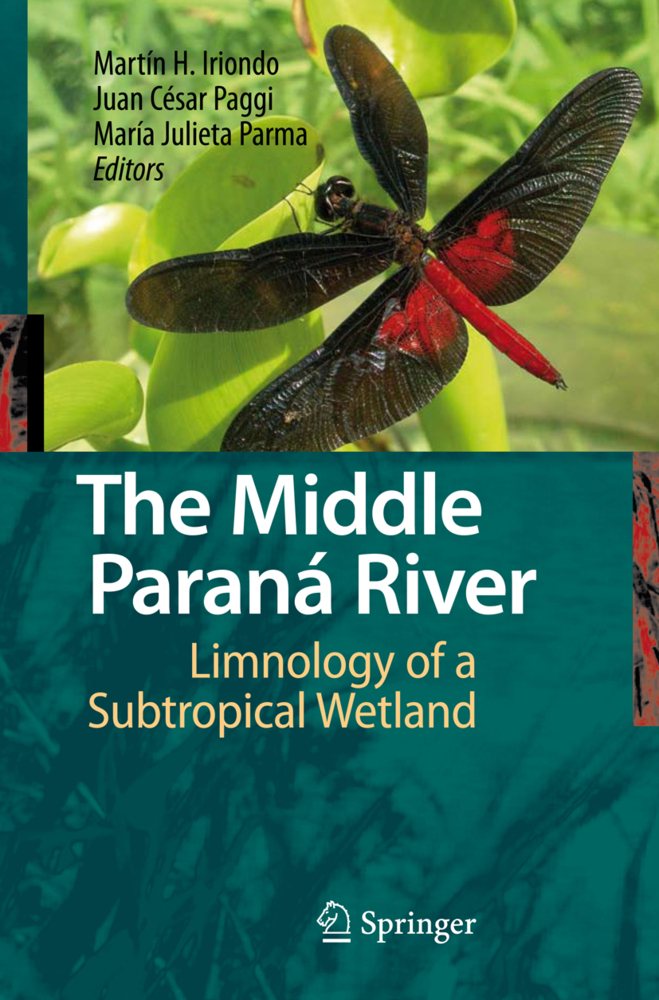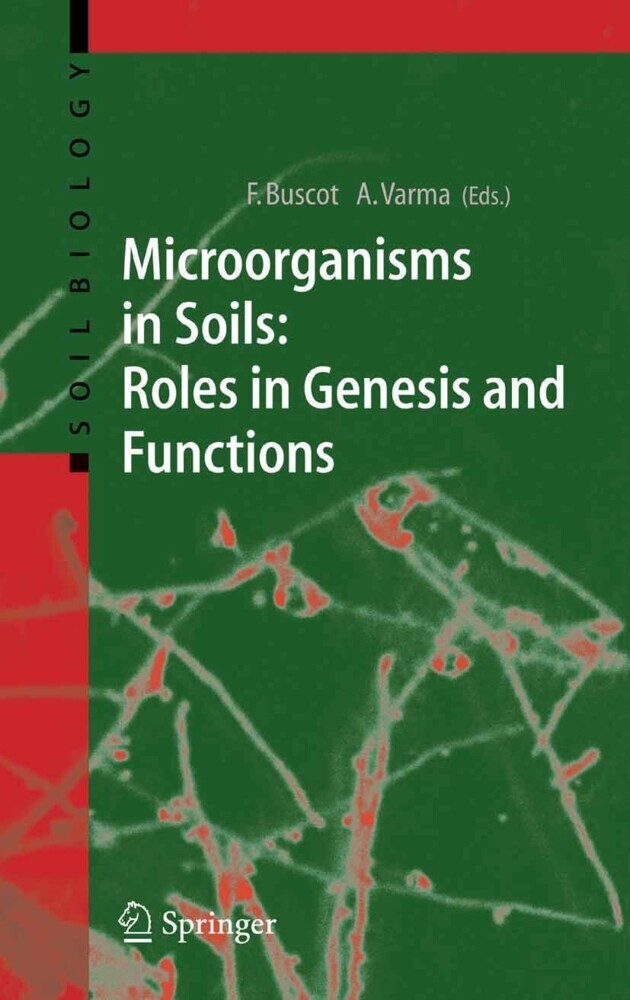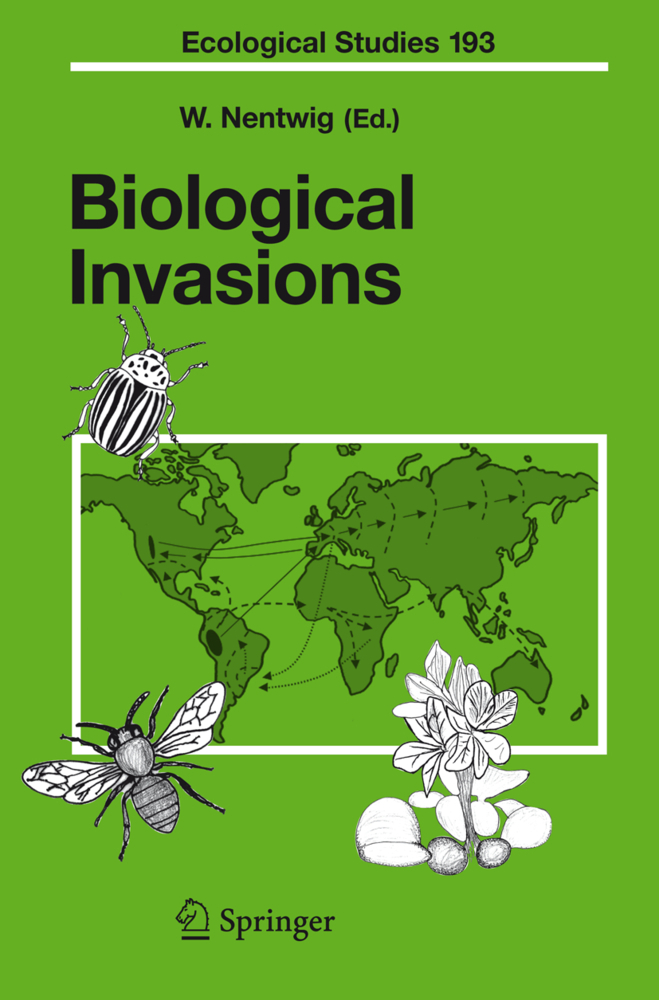Biological Soil Crusts: Structure, Function, and Management
Biological Soil Crusts: Structure, Function, and Management
In arid and semiarid lands throughout the world, where the cover of vegetation is sparse or absent,the open spaces between the higher plants are generally not bare of autotrophic life,but covered by a community of highly specialized organisms. This soil-surface community consists of cyanob- teria, algae, lichens, mosses, microfungi, and other bacteria in differing proportions. Cyanobacterial and microfungal filaments, rhizinae and rhi- morphs of lichens, and the rhizinae and protonemata of bryophytes weave throughout the top few millimeters of soil,gluing loose soil particles together. This forms a crust up to a few centimeters thick that stabilizes and protects soil surfaces from erosive forces (Cameron and Blank 1966; Friedmann and Galun 1974; Belnap and Gardner 1993).These crusts occur in all hot,cool,and cold-arid and semiarid regions of the world,and may constitute up to or more than 70% of the living cover. Biological soil crusts have only recently been recognized as having a major influence on terrestrial ecosystems.
2 Biological Soil Crusts of North America
3 Biological Soil Crusts of South America
4 Lichen-Rich Soil Crusts of Arctic Greenland
5 Biological Soil Crusts of the Subalpine, Alpine, and Nival Areas in the Alps
6 Biological Soil Crusts of European Temperate and Mediterranean Regions
7 Biological Soil Crusts of Asia Including the Don and Volga Region
8 Biological Soil Crusts of the Middle East
9 Biological Soil Crusts of Africa
10 Biological Soil Crusts of Australia
11 Biological Soil Crusts of Antarctica
12 Synopsis: Comparative Biogeography and Ecology of Soil-Crust Biota
II Heterotrophic Components of Biological Soil Crusts
13 Soil Fungi as Components of Biological Soil Crusts
14 Microbes and Microfauna Associated with Biological Soil Crusts
III Structure of Biological Soil Crusts: Microscale to Landscape
15 Comparative Structure of Physical and Biological Soil Crusts
16 Small Scale Environments and Distribution of Biological Soil Crusts
17 Ecological Determinants of Species Composition of Biological Soil Crusts on a Landscape Scale
IV Biological Soil Crusts as an Ecosystem Component: Carbon and Nitrogen Acquisition and Interaction with Vascular Plants
18 Photosynthesis of Soil-Crust Biota as Dependent on Environmental Factors
19 Factors Influencing Nitrogen Fixation and Nitrogen Release in Biological Soil Crusts
20 Biological Soil Crusts and Ecosystem Nitrogen and Carbon Dynamics
21 Influence of Biological Soil Crusts on Soil Environments and Vascular Plants
V Soil Stability and Hydrology as Influenced by Soil Crusts
22 Effects of Biological Soil Crusts on Water Redistribution in the Negev Desert, Israel: Case Study in Longitudinal Dunes
23 Biological Soil Crusts and Water Relations in Australian Deserts
24 Biological Soil Crusts and Hydrology in North American Deserts
25 Biological Soil Crusts and Wind Erosion
26 Synopsis: Influence of Biological Soil Crusts on Arid Land Hydrology and Soil Stability
VI Disturbance to Biological Soil Crusts: Resistance, Resilience, and Restoration
27 Disturbance and Recovery of Biological Soil Crusts
28 Impacts of Fire on Biological Soil Crusts
VII Monitoring and Management of Biological Soil Crusts
29 Biological Soil Crusts and Livestock in Arid Ecosystems: Are they Compatible?
30 Global Change and the Future of Biological Soil Crusts
31 Remote Sensing of Biological Soil Crusts
32 Monitoring and Management of Biological Soil Crusts
VIII Conclusion
33 Structure and Functioning of Biological Soil Crusts: Synthesis
Taxonomic Index.
I Taxonomic Composition, Ecology, and Biogeography of Soil-Crust Communities
1 Biological Soil Crusts: Characteristics and Distribution2 Biological Soil Crusts of North America
3 Biological Soil Crusts of South America
4 Lichen-Rich Soil Crusts of Arctic Greenland
5 Biological Soil Crusts of the Subalpine, Alpine, and Nival Areas in the Alps
6 Biological Soil Crusts of European Temperate and Mediterranean Regions
7 Biological Soil Crusts of Asia Including the Don and Volga Region
8 Biological Soil Crusts of the Middle East
9 Biological Soil Crusts of Africa
10 Biological Soil Crusts of Australia
11 Biological Soil Crusts of Antarctica
12 Synopsis: Comparative Biogeography and Ecology of Soil-Crust Biota
II Heterotrophic Components of Biological Soil Crusts
13 Soil Fungi as Components of Biological Soil Crusts
14 Microbes and Microfauna Associated with Biological Soil Crusts
III Structure of Biological Soil Crusts: Microscale to Landscape
15 Comparative Structure of Physical and Biological Soil Crusts
16 Small Scale Environments and Distribution of Biological Soil Crusts
17 Ecological Determinants of Species Composition of Biological Soil Crusts on a Landscape Scale
IV Biological Soil Crusts as an Ecosystem Component: Carbon and Nitrogen Acquisition and Interaction with Vascular Plants
18 Photosynthesis of Soil-Crust Biota as Dependent on Environmental Factors
19 Factors Influencing Nitrogen Fixation and Nitrogen Release in Biological Soil Crusts
20 Biological Soil Crusts and Ecosystem Nitrogen and Carbon Dynamics
21 Influence of Biological Soil Crusts on Soil Environments and Vascular Plants
V Soil Stability and Hydrology as Influenced by Soil Crusts
22 Effects of Biological Soil Crusts on Water Redistribution in the Negev Desert, Israel: Case Study in Longitudinal Dunes
23 Biological Soil Crusts and Water Relations in Australian Deserts
24 Biological Soil Crusts and Hydrology in North American Deserts
25 Biological Soil Crusts and Wind Erosion
26 Synopsis: Influence of Biological Soil Crusts on Arid Land Hydrology and Soil Stability
VI Disturbance to Biological Soil Crusts: Resistance, Resilience, and Restoration
27 Disturbance and Recovery of Biological Soil Crusts
28 Impacts of Fire on Biological Soil Crusts
VII Monitoring and Management of Biological Soil Crusts
29 Biological Soil Crusts and Livestock in Arid Ecosystems: Are they Compatible?
30 Global Change and the Future of Biological Soil Crusts
31 Remote Sensing of Biological Soil Crusts
32 Monitoring and Management of Biological Soil Crusts
VIII Conclusion
33 Structure and Functioning of Biological Soil Crusts: Synthesis
Taxonomic Index.
| ISBN | 978-3-540-43757-4 |
|---|---|
| Artikelnummer | 9783540437574 |
| Medientyp | Buch |
| Copyrightjahr | 2003 |
| Verlag | Springer, Berlin |
| Umfang | XVIII, 506 Seiten |
| Abbildungen | XVIII, 506 p. 15 illus. |
| Sprache | Englisch |

